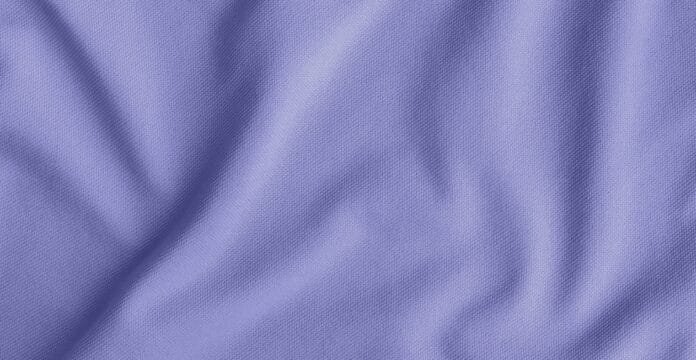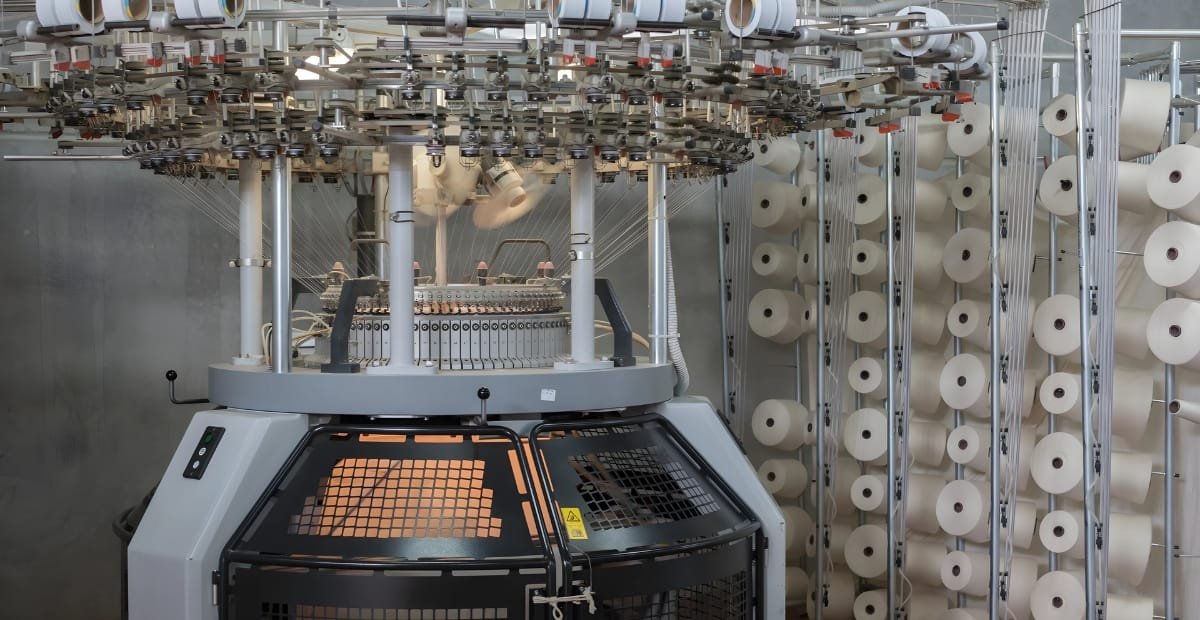Let’s assume for a second, what single fabric could you pull out on a lazy Sunday, while working out, or anytime you simply want to get comfy in? For over millions of people globally, their answer would be jersey cotton fabric. The fabric blends stretch, softness, and versatility together, serving as a wardrobe’s unsung champion, jersey cotton’s knitted fabric providing comfort without compromising on style.
With jersey cotton comprising t-shirts, loungewear, and even sophisticated dresses, the fabric acts as the basis of casual contemporary apparel. The question is, what is jersey cotton, and what makes it so common? This is the ultimate jersey fabric guide, and in the coming sections, we would attempt to answer all your questions jersey cotton fabric. We will discuss its distinctive knit construction, guide you through its unexpected journey from the Jersey Island, and analyze its astonishing history. In addition, we will discuss the advantages and key characteristics of jersey cotton and its comparison with interlock netting and knitted interlock fabrics to determine the best use. We will also discuss the best ways to sew and maintain jersey fabric. This is to make sure the handmade garments last many years and look professional in the end.
What is Jersey Cotton Fabric? The Knit’s Enchantment
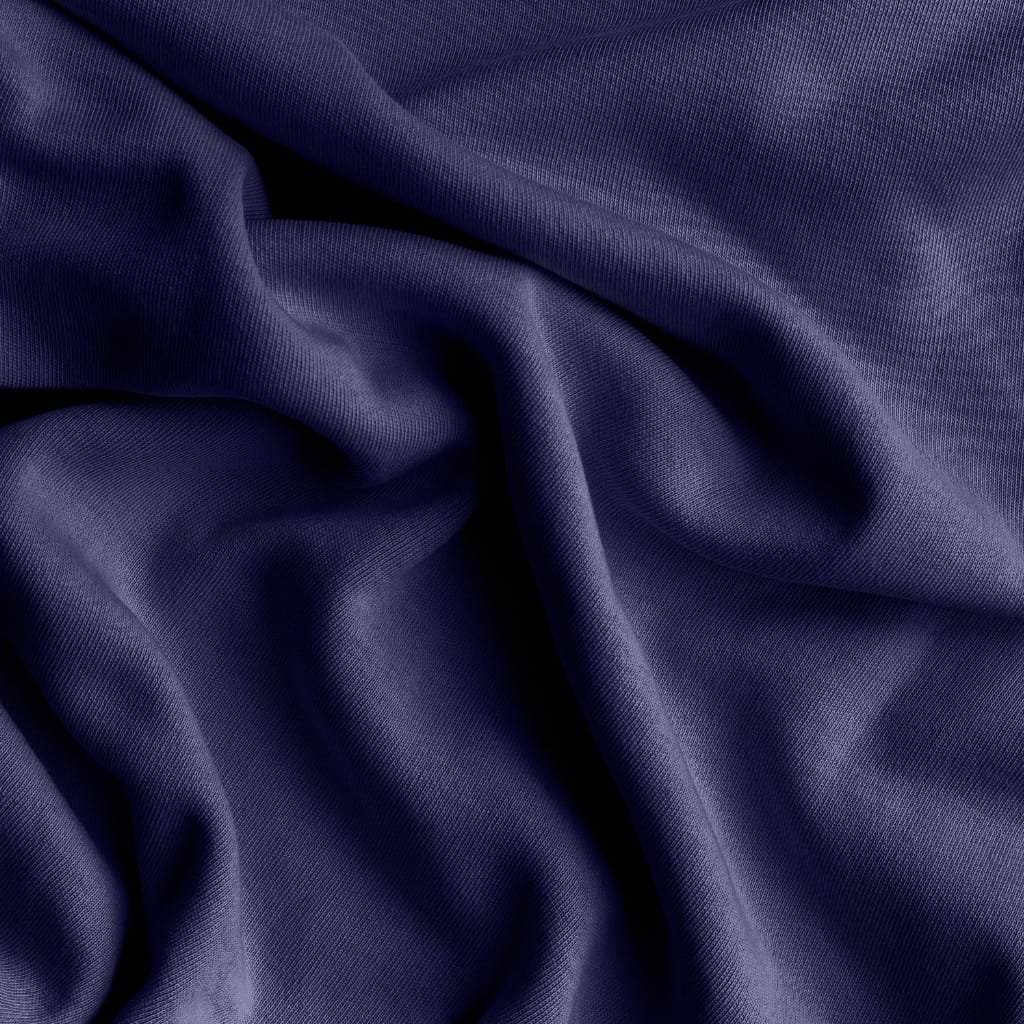
Understanding what a jersey is and what it is not is critical at the outset. This is what a lot of people get wrong about the fabric. Jersey is a single-knit fabric which means it is formed from a single set of needles on a knitting machine. This means that the fabric formed has a distinct “right” and “wrong” side.
The smooth side of jersey fabric features a subtle vertical rib, while the wrong side displays a looped, textured surface. This distinctive structure gives the fabric its characteristic stretch and elegant drape. For example, when manufacturers use high-quality cotton fibers for knitting, they produce a fabric that feels soft, comfortable, and highly breathable. Hence, the next time you slip on a soft t-shirt, you are experiencing the magic that comes with single knit jersey fabric.
A Stitch in time: The Unexpected History of Jersey

To fully appreciate jersey fabric, one must trace it back to its roots. The fabric takes its name from the Isle of Jersey, a British Crown dependency in the English Channel. Fishermen on the island first used this type of wool knit for its warmth and stretchable properties.
The changes the fabric underwent were more than simply transformative. French designer Gabrielle “Coco” Chanel was the first to capture the essence of femininity using jersey cloth, thereby bringing it from its past associations with undergarments and activewear to the high fashion world. As she once famously declared, “I make fashion women can live in, breathe in, feel comfortable in.” Shortly after Chanel’s innovation, jersey cotton gained notoriety through the humble t-shirt, which was first issued to the U.S. Navy in 1913. From that moment on, the jersey cotton t-shirt has remained an irreplaceable and ubiquitous item of clothing worn worldwide. Ultimately, perhaps the most defining—and paradoxical—feature of jersey fabric is its remarkable versatility.
Designers value it for its ability to serve both high-fashion aesthetics and functional, everyday textiles with equal success.Read more..History of Cotton Fabric
Key Characteristics: The Pros and Cons of Jersey
The apparel industry owes its profits from the fabric to an unusual array of characteristics that contribute to the ease of wear and comfort associated with the fabric. Kent, St. John, Knoll, and Trevillion list these characteristics as:
Advantages
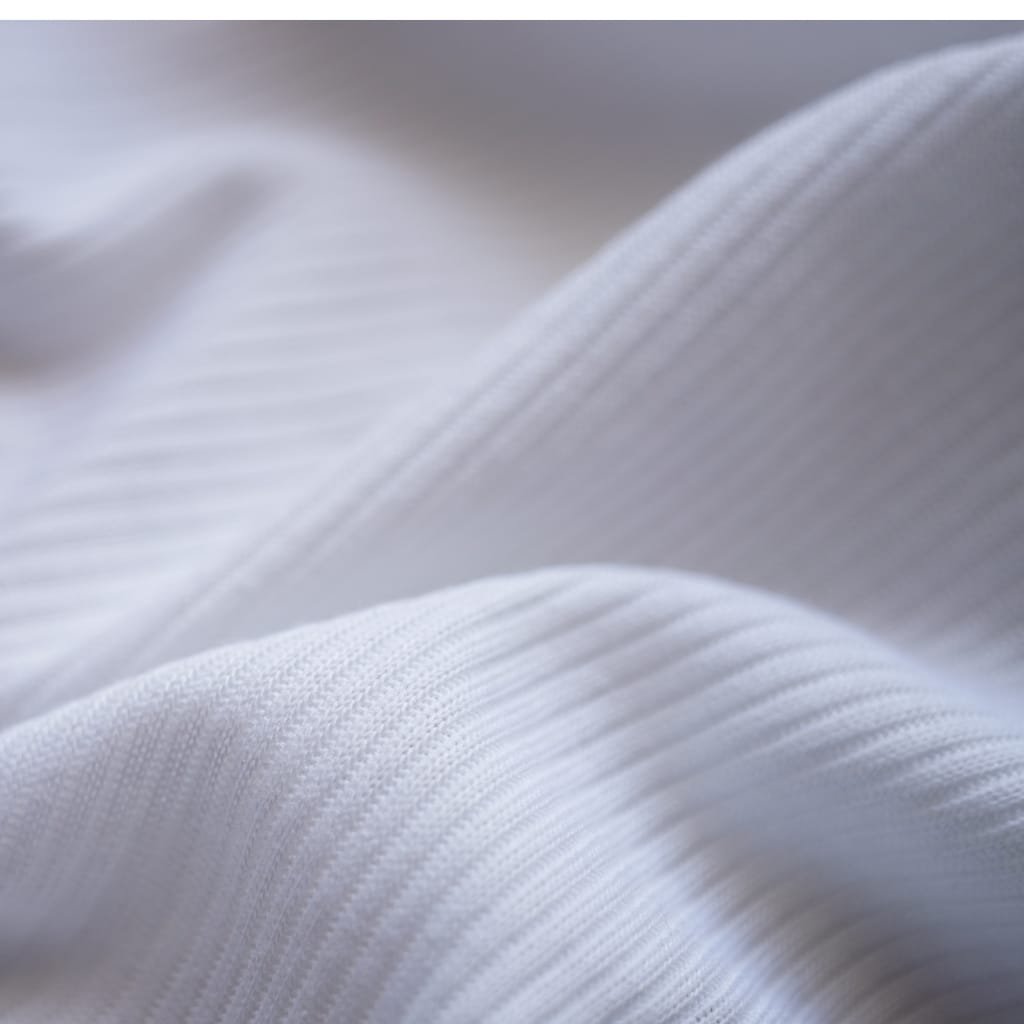
Above all, extreme softness defines jersey fabric. This is because it has the ability to flatter and comfort the skin, and as such, is highly sought after. Furthermore, wearers appreciate the cotton knit which is not only seamless and smooth but also does not irritate the skin.
Unparalleled Flexibility and Resilience: Jersey cloth naturally stretches (one way across the grain) and therefore permits ease of movement in the fabric while forgiving fit all around. Jersey bespoken of high quality fabric will always return to its original form after being stretched beyond limits.
Absorbent and Air Permeable (Breathable): Cotton as a fiber is naturally breathable and absorbs moisture. Wearing activewear or sleepwear made of jersey cotton or any other summer wear while outdoor activities or in warm weather will help in efficiently managing excessive perspiration and discomfort by keeping the body cool.
Furthermore, jersey possesses a beautiful weight and fluidity, which allows it to drape elegantly on the body. This inherent characteristic makes it a brilliant choice for flowy dresses, skirts, and tops that require softness and graceful movement.
Washable and Generally Durable: Jersey cotton is low maintenance when traveling or on the go with its limited tendencies to crease. Most of the jersey cotton are machine washable and dryable, alongside their general durability.
Disadvantages
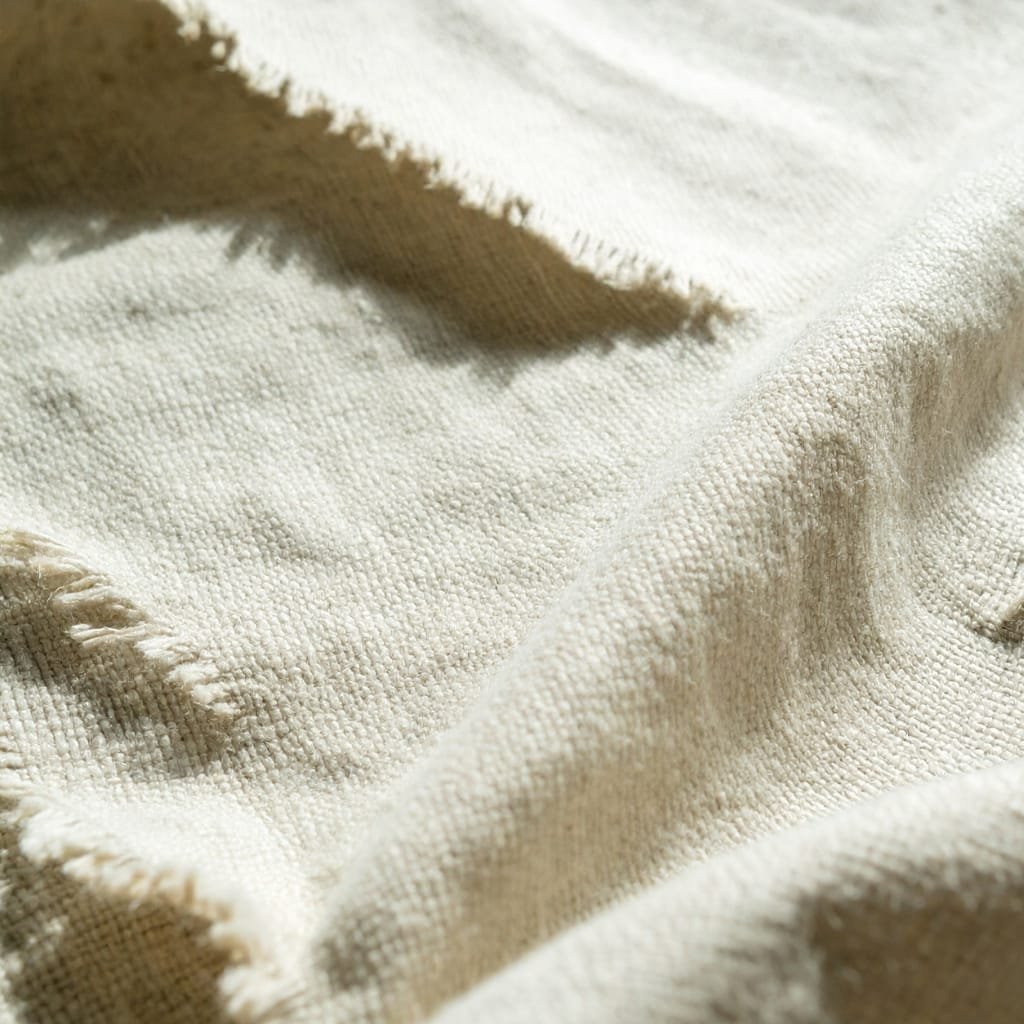
Edges Curl: The inward curling of the raw edges of jersey fabric, and particularly the cut edges due to knitting individually, will tend to curl, making the set sewing very difficult.
Low-quality jersey knits often stretch out and lose their shape over time. For example, cheap sweatpants frequently develop baggy knees, while low-grade t-shirts may develop droopy necklines that fail to retain their original fit.
Fading Potential: Although cotton jersey fabric holds dye well during the first washes, the, particularly darker ones, may fade after several washes.
Jersey vs. Interlock: Types of Knits
Many people tend to confuse jersey with other types of knits, more so with Interlock.
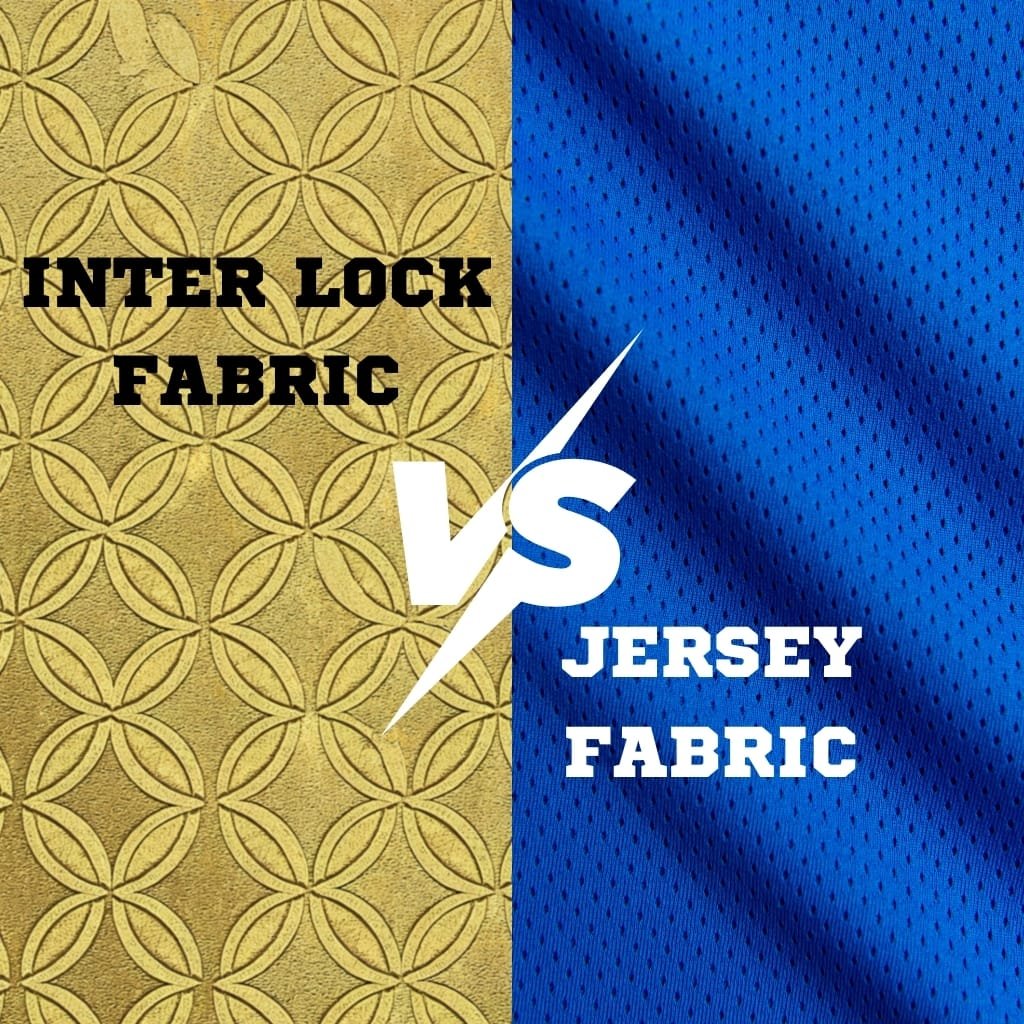
Jersey utilizes a single-knit construction. This method produces a lightweight fabric with a distinct right side that shows a subtle rib and a textured, looped wrong side. Its edges tend to curl inward, and manufacturers most commonly use this versatile knit for crafting t-shirts.
Interlock is a double-knit fabric. It has two layers of jersey knit layered back-to-back. This makes Interlock thicker, more stable, and has a smoother surface on both sides (the edges do not curl). It is often used to make heavier t-shirts, baby clothes, and more structured knit garments.
In conclusion, for lightweight and drapey garments such as tops and dresses, use jersey. Interlock is more suitable for structured and stable garments that need heavier fabric.See more….Canvas Cotton Fabric
The Versatility of Jersey Cotton Fabrics
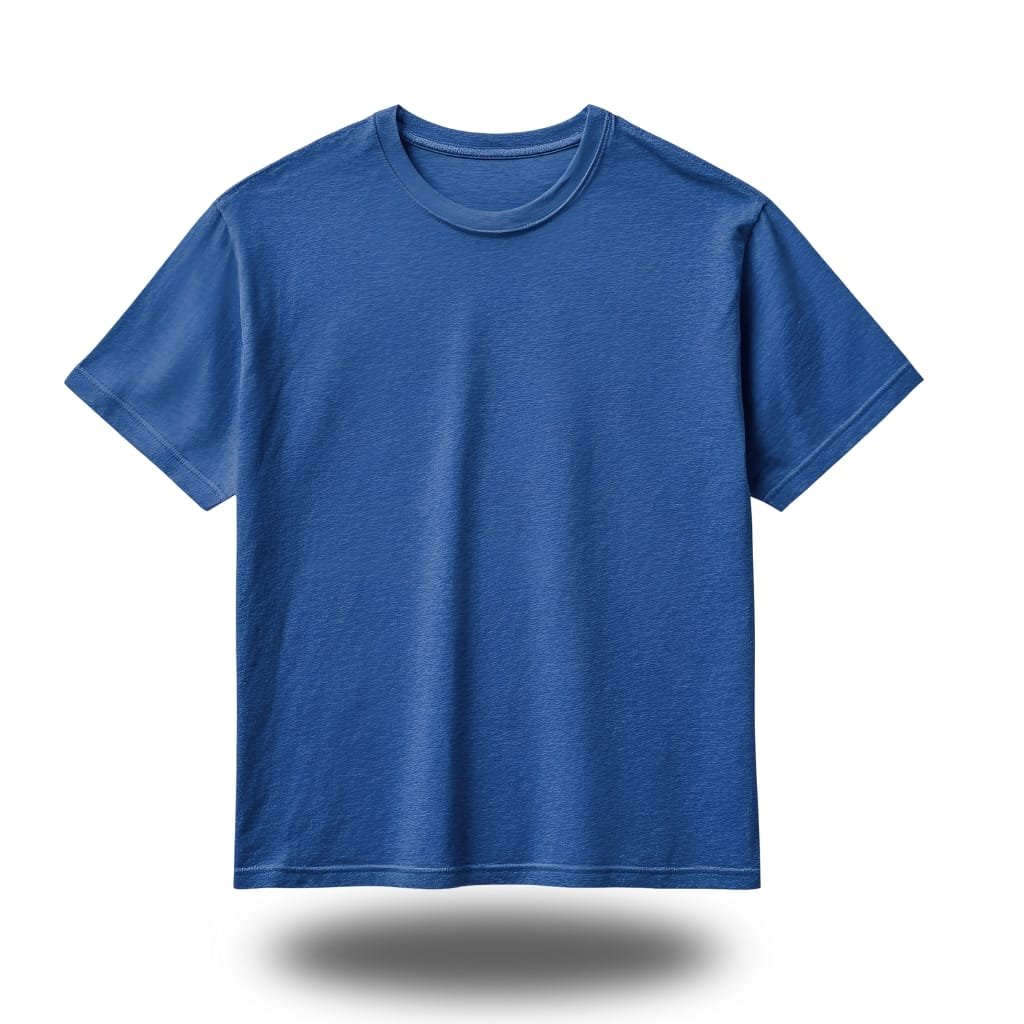
Jersey’s distinct blend of comfort and adjustable nature makes it suitable for many uses.
Apparel: This is the main area of use for jersey. It is the fabric on all t-shirts, tops, dresses, skirts, pajamas, loungewear, leggings, and even underwear. It drapes beautifully and has incredible stretch.
Baby and Children’s Clothing: The breathable and stretchable material of jersey is readily suitable and simple to care for in baby onesies and play T–shirts, also in play and school clothing for children.
Home Goods: The jersey comfort is not restricted to clothing. Its increasing use in home textiles includes throws, bed sheets, and cushion covers.
Crafting: Most sewists appreciate and admire jersey for its easy manipulation and pristine finish that rivals retail standards.
Beginners Guide: Sewing with Jersey
For the total novice, sewing with jersey is no easy feat especially with its stretchy, curling edges. However, the right approaches taken to sewing with jersey are the most beneficial and highly rewarding.
Choosing the Right Needle and Thread: A ballpoint needle is one of the most important tools for sewing jersey. A sharp needle will puncture the fabric, resulting in snagging and runs in the knit, whilst a ballpoint needle will separate the fibers. Use a polyester thread for its slight stretch, which helps with the seams as the fabric will move.
Stitch Selection: Every time you sew with jersey, a straight stitch risks popping under tension because it lacks elasticity. Instead, you should use a narrow zigzag stitch or a dedicated stretch stitch, as these allow the seam to stretch with the fabric without breaking.This means the seam will break.
Instead of a narrow zigzag stitch, which is a narrow zigzag stitch, or a stretch stitch. These kinds of stitches can stretch without breaking. The the stitch can’t break. Jersey is best sewn with a serger (over-locker), which allow the seams to be sewn, trimmed of, and finished in a single motion.
Curling edges: The most efficient means of controlling these problems is the use of pins, pattern weights or fabric clips to hold the layers together. Spray starch is useful in adding a stiffening quality to the edges to take away the tendency to curl. The edges of seams are finished with a serger, and the zigzag stitch is best used on a regular machen.Read more…..Upland Cotton
Caring for your jersey cotton garment:
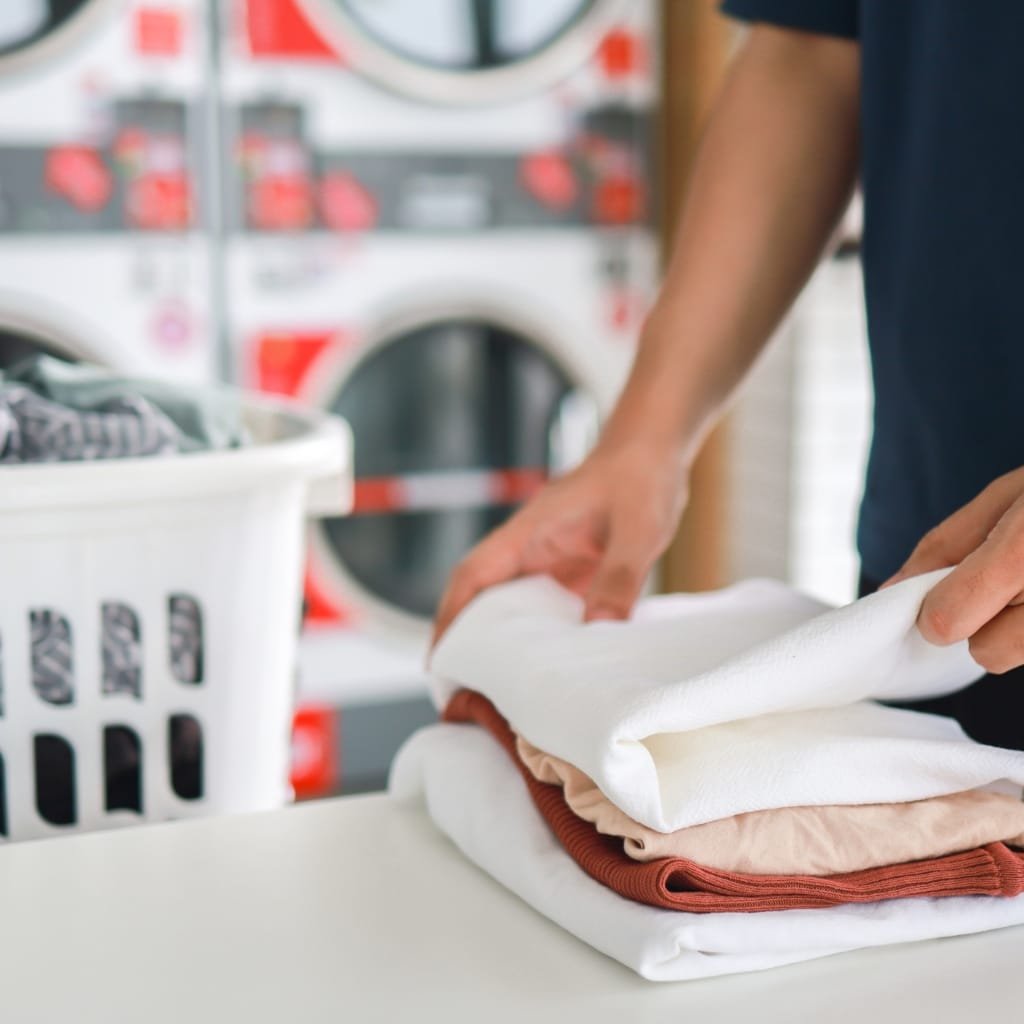
Your jersey will not lose its color, shape or texture, provided that you take the right steps in caring for it.
Washing: on a gentle cycle, machine wash in cold or warm water. To shield the surface from friction, the garment must be turned inside out to reduce the fading. Use a mild detergent.
Drying: the fabric can be tumble dried on a low setting, with the intention of preventing shape loss and shrinkage, and removed in a timely manner. Alternatively, gentle line drying will best maintain the elasticity of the garment.
Ironing garments- If the garments need ironing use the middle temperature with steam. Iron on the inner fabric to prevent stretching the garment or to prevent any shine on the right side.
How to Choose Quality Jersey Fabric
The quality of jersey can vary significantly. Look for these markers that depict jersey fabric quality:
Weight (GSM)- Jersey is measured in grams per square meter (GSM). Lightweight jersey (130-150 GSM) is perfect for flowy tops. Medium weight (150-180 GSM) is preferred for t-shirts. Heavyweight (200+ GSM) is used for sweatshirts.
Stretch and Recovery- Stretch the fabric widthwise. Quality jersey will bounce back with no distortion, while poor quality jersey will sag.
Fiber Content- In terms of breathability, look for the jersey with 100% cotton. Blends with elastane (95% cotton, 5% elastane) provide excellent stretch and recovery.
Feel- The fabric should feel soft, smooth, and dense, not thin, papery or slippery.
Finale: Relish the Softness of Jersey
To the rest of the world, jersey cotton is more than a t-shirt fabric. Unlike other fabrics, its knit works make the cotton stylish, functional, and above all comfy. Jersey’s journey from an island to all over the world is astonishing, and the softness, stretch, and practicality of jersey prove its worth.
Like other fabrics, jersey’s softness, stylishness, and ease of draping and caring make it an all time favorite for beginners and(professionals alike). The next time you’re wearing a comfortable dress or your favorite t-shirt, consider the jersey knit single cotton that makes every outfit comfortable and casual. This fabric is a classic and timeless.
FAQs
What is jersey cotton fabric?
Manufacturers create jersey by interlocking loops of thread into a single-knit fabric, typically using cotton yarns. This process gives the fabric its renowned softness, stretch, and comfort, making it ideal for t-shirts, dresses, and loungewear. Unlike woven fabrics, which use a crisscross method, jersey’s knitted structure allows for greater flexibility and ease of movement.
Does jersey cotton stretch?
Yes! Jersey has natural two-way stretch (across the width) due to its knit structure. Blends with elastane (e.g., 95% cotton, 5% elastane) offer even greater stretch and recovery.
Is jersey cotton good for beginners to sew with?
It can be challenging due to curling edges and stretch. However, using a ballpoint needle, stretch stitch, and polyester thread makes it manageable. Start with stable, medium-weight jersey.

